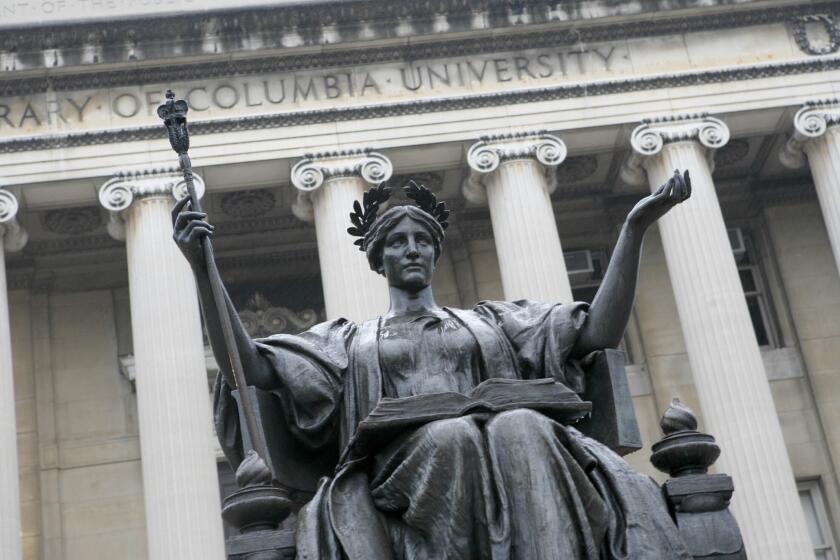Election day lessons for LAUSD
Today, Coombs, Shaffer and Snell discuss the election. Previously, the debated the merits of mayoral takeover via the charter-school movement. Future installments will focus on the role of teachers unions and other contested education topics.
Let students vote with their dollars
By Lisa Snell
While transforming Los Angeles Unified will be a difficult job no matter who sits on the school board, I believe there are two significant impacts that could come from a win by the Mayor’s candidatesTamar Galatzan (District 3) and Richard Vladovic (District 7).
First, since they are more open to charter schools, they could help increase the number of high-quality schools in Los Angeles Unified through the direct approval of more charter schools or the support of Mayor-authorized charters. These new schools would be an immediate escape valve for those students languishing in low-performing schools like Locke high school. In addition, the competition from charters will continue to put pressure on the district to change its practices and make district-schools better performers.
Secondly, the Mayor’s candidates could help the Mayor push for a school empowerment plan within Los Angeles Unified itself. In Mayor Villaraigosa’s education reform plan, The Schoolhouse: A Framework to Give Every Child in LAUSD An Excellent Education, he calls for decentralizing public schools by driving more money into the classroom, empowering principals to make key decisions affecting their schools, and giving schools autonomy over school budgets. Under his plan, money would follow students into schools. Tamar Galatzan has also mentioned local control of budgets as her solution for dealing with district bureaucracy and inefficiency.
School empowerment is catching on nationwide. In his 2007 State of the City Address, New York City Mayor Michael Bloomberg called for school empowerment through the “weighted-student formula,” a growing trend in which public funding moves with the child, for all of New York City’s 1,467 schools. One week later, Nevada Gov. Jim Gibbons echoed Bloomberg’s proposal with his own weighted-student formula plan, which would affect more than 100 schools and “empower” families with greater educational choice.
Even within the Los Angeles Unified School District, district and union officials have agreed in concept to develop a group of independent small schools in the Pico-Union area, allowing students to choose a campus that best fits their interests. The Belmont Pilot Schools Network would consist of five to ten fully autonomous high schools launched over the next five years, with a maximum of 400 students each. Principals and teachers at those schools would work under a separate contract that would free them to determine school calendars, curricula, budgets and administrative structures.
These school leaders are choosing this school empowerment reform because it works rapidly to transform existing public schools. It is not a coincidence that San Francisco, in its sixth year of school empowerment, is the highest performing urban district in California. Similarly, Oakland schools have shown rapid improvement under the district’s move to a school empowerment plan. In 2003-04, for instance, Oakland’s high schools offered 17 Advanced Placement classes. Last year, they increased this total to 91. Oakland students also are taking high-level math and science courses more frequently. About 800 high school students studied first-year physics last yearnearly triple the number taking the course in the 2004 school year. Overall, Oakland high schools gained, on average, 30 points in one year on the 2006 Academic Performance Index.
Short of breaking up the LAUSD into smaller districts, the school empowerment components of the Mayor’s school reform plan and competition to the district from charter schools offer the best hope for progress in student outcomes in Los Angeles. However, the Mayor needs a receptive school board to increase the number of high-quality schools through charters for students stuck in failing traditional schools and to transform the district’s existing schools through school empowerment.
Lisa Snell is director of education and child welfare at Reason Foundation, a nonprofit think tank advancing free minds and free markets.
Candidates, newspapers, voters are wrong about charters
By Walter P. Coombs and Ralph E. Shaffer
Well, Lisa, the charterites and advocates of turning our public schools over to a tsar (oops, mayor) masquerading as an education reformer will likely win when the votes are counted tonight. Barring a major reversal of voter opinion or a surprising turnout of voters who missed the primary, Antonio Villaraigosa will become LAUSD’s virtual superintendent.
Technically the school board and Superintendent David Brewer will run things, but the mayor’s board majority will be committed to promoting charter schools instead of making the existing district function the way it ought to.
Those who truly believe in public education should have made charter schools the election’s focal point. Instead, their leading candidate, Jon Lauritzen, reversed himself in mid-campaign. His about face on the Green Dot charter expansion was a regrettable action by a candidate facing defeat. Lauritzen should have voted with Julie Korenstein and taken the high road, standing firm in opposition to expansion.
With strong support from the teachers in the district who oppose charters, he could have won. Instead, his campaign and the teachers’ union ignored charters. They should have made them the focal point of the campaign and educated voters to their inherent dangers.
Incumbent David Tokofsky, usually counted in the ranks of staunch defenders of public schools, affiliated himself with Green Dot charters and chose not to run. His successor will be pro-charter, guaranteeing a pro-mayor, pro-charter majority.
As a result, charters came through this campaign unscathed. The city’s dailies endorsed the mayor’s slate and editorialized themselves ad nauseam in favor of charters. Their news pages reflected that pro-charter stance.
While the teachers’ union has a war chest, it hardly compares with the money and influence bestowed on the pro-mayor, pro-charter candidates. Deep pockets from the entrepreneurial class are buying this election. And that raises a question about what the billionaires and their cronies will gain from this election.
Another disturbing element of this school board election has been the L.A. Area Chamber of Commerce’s endorsement of candidates in the primary: Williams, Galantzen, Aguilar and Vladovic. Such endorsements are probably a violation of the California Supreme court’s 1976 ruling in Stanson v. Mott, not because the chamber can’t endorse but because among its members are dues-paying governmental entities of L.A. city government. Their membership and dues imply tacit endorsement of the candidates, a clear violation of California’s government and education codes. Government entities are supposed to refrain from putting their fingers on the electoral scales. But they did it this time.
Read the chamber’s explanation of why they think that school boards are outdated and why they support the mayor’s takeover of LAUSD. They claim that K-12 education is in chaos all over America. The chamber obviously hasn’t looked at the schools in the rest of L.A. county. No one has even petitioned to organize a charter school in Covina, West Covina, Glendora or Azusa.
Should Lauritzen retain his seat, we hope that his commitment to public education will reassert itself by calling for a halt to the district’s charter mania.
Walter P. Coombs is professor emeritus of social sciences at Cal Poly Pomona, and Ralph E. Shaffer is professor emeritus of history at Cal Poly Pomona.
| Day 2 | | |
More to Read
Start your day right
Sign up for Essential California for news, features and recommendations from the L.A. Times and beyond in your inbox six days a week.
You may occasionally receive promotional content from the Los Angeles Times.






